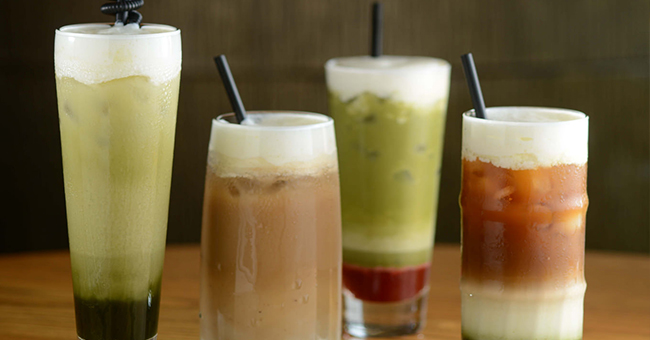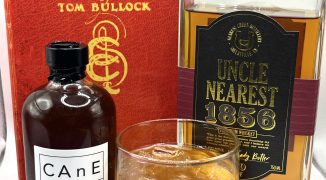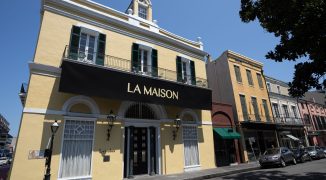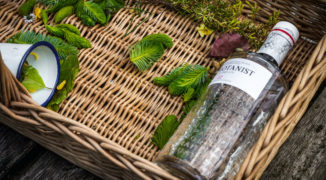Bartenders have been working with tea since before the cocktail existed, in the era when punch was all the rage and tea was the base upon which it usually stood. Historically, tea seemed limited to a basic choice of black, green or herbal. But lately, even non-tea drinkers are becoming familiar with the words pu-erh, matcha, rooibos and yerba mate. With new options more widely available, tea prevails as a way to add layers of complexity to both hot and cold drinks alike.
1. Try a tea liqueur. One tea trend gaining traction is the use of tea liqueurs. It’s not a new thing — it began in the 1950’s with a green tea liqueur from Japan-based Russian confectioner Morozoff. While that particular liqueur is no longer readily available, a handful of others have risen to take its place. Product lines from Tatratea utilize black and white teas, herbs and natural fruit products, and Joseph Cartron’s line includes Rooibos, Yerba Mate and Smoked Black Tea Liqueurs. While becoming more prevalent in the market, the use of tea liqueurs is nowhere near as widespread as the practice of infusing tea directly into base spirits and modifiers or creating syrups or tinctures, all methods which allow the user to apply tea flavors in a consistent manner and with an endless palette of flavors to choose from.
2. Experiment with pairings. Whether traditional camellia sinensis-based, ilex-based (as in yerba mate and guayusa), rooibos-based, herbal or flavored, a bartender can find a tea to pair with just about any base spirit that they choose to work with these days. Gin classically pairs well with almost any tea, from green to earl grey to lapsang souchong. Vodka and most other white spirits work beautifully with the softness of white and green teas or herbal teas with fruit. Brown spirits pair exceptionally well with black tea and tisanes with spices. The website of Harney & Sons, which is the world’s largest supplier of tea to the hospitality industry, features an in-depth catalog of their teas—a helpful resource when thinking about putting tea in a cocktail. They even offer samples for most of their blends, which are great for experimenting bartenders.
3. Give matcha a whirl. Denver bartender Allison Widdecombe of Williams & Graham (which won a 2015 Spirited Award for Best American Bar ) uses a lot of tea in her cocktails. “Not only do I just happen to love tea, but I love the versatility of it — the right tea can add not only flavor but also bitterness, sweetness, and sometimes even acidity — all elements that are essential aspects of a balanced cocktail.” Her Down the Rabbit Hole cocktail incorporates both tea and cream into a cold cocktail that is dessert-like without being overly sweet. She arrived at the recipe by taking a drink that she felt was a somewhat flat and one dimensional combination of Tanqueray 10, Licor 43, cream and sugar and completely transformed it by adding matcha tea. Matcha, a green tea powder from Japan, adds depth of flavor and attitude to the drink with the addition of just a small pinch.
4. Bust out the bubbles. Asian bubble tea is also making its way into the cocktail scene. The popular beverage originated in Taiwan, but it’s morphed into many variations as it caught on around the globe. In the U.S., what was originally meant to be a tea- or milk-based product is often bastardized into an artificially flavored, smoothie-like boxed product containing no tea at all. Several bar programs throughout the country have ignited a rising trend in crafting their own spiked bubble tea made from higher quality products. Mopho in New Orleans, Blue Koi in Kansas City and Mecha in South Norwalk, CT are just a few programs leading this charge. Mecha’s Temple of the Sun features a rooibos-based tea blend, passion fruit puree, pineapple and lemon juice and of course tapioca pearls or “boba,” the common ingredient in all bubble tea. Imbibers can take the drink to the next level with suggested additions of Barsol MV Italia Pisco or a blend of Espelon Blanco Tequila/Nuestra Soledad Mezcal.
5. Go with a garnish. Delicious uses of tea are springing up everywhere in the cocktail world—and it’s not just limited to drinking. Sam Johnson of New York’s Clover Club, Leyenda and Pouring Ribbons uses chamomile tea as the garnish on top of his “‘Bumble” cocktail, and the team at The Aviary is notorious for using tea in every imaginable way — from coffee siphons to smoking guns and dry ice vapor for a sensory tea overload.
All trends aside, one thing is for sure: modern bartenders, who are celebrating this renaissance period of all things beverage, have not left tea behind as a go-to ingredient in their drinks, and the use of tea, with its centuries-old use in cocktails, is not a flash-in-the-pan.





